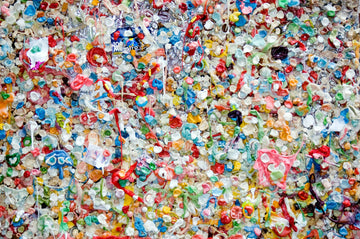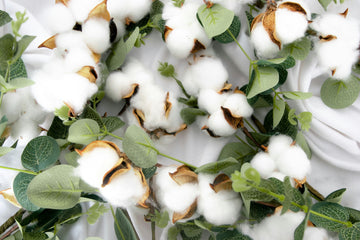As the global demand for sustainable materials grows, rPET (recycled polyethylene terephthalate) has gained attention as an eco-friendly alternative to virgin plastic. With its origins in recycled plastic bottles and packaging, rPET is part of the solution to reducing waste and minimizing the environmental impact of plastic production. But what exactly is rPET, and how can businesses and consumers incorporate it into their efforts toward sustainability?
In this article, we’ll explore what rPET is, how it’s made, and why it’s an essential material for a circular economy. We’ll also look at its applications across industries and why it’s becoming a popular choice for eco-conscious brands and consumers.
What is rPET?
rPET stands for recycled polyethylene terephthalate, which is the recycled version of PET—a plastic commonly used in bottles, food containers, and synthetic fabrics. PET is widely known for being strong, lightweight, and transparent, making it an ideal choice for packaging. However, like all plastics, PET takes hundreds of years to break down, posing a significant challenge for waste management.
rPET is created by recycling used PET plastic, such as water bottles and packaging, transforming them into new products. This process reduces the need for virgin plastic production, conserves natural resources, and helps keep plastic waste out of landfills and oceans.
The Process of Creating rPET
The transformation from discarded plastic to rPET involves several steps:
- Collection: The first step is collecting PET waste, primarily in the form of used plastic bottles, containers, and packaging. These materials are gathered through recycling programs or directly from waste management systems.
- Sorting and Cleaning: Once collected, the PET materials are sorted by color and type to ensure consistency in the final product. They are then thoroughly cleaned to remove labels, adhesives, and other contaminants.
- Shredding: The cleaned plastic is shredded into small flakes, which are further processed to ensure they meet the standards for rPET production.
- Melting and Reforming: The shredded plastic flakes are melted down and either extruded into fibers or molded into new shapes, such as pellets. These pellets can then be used to create new products, including fabric, packaging, and other goods.
The recycling process can be repeated multiple times, meaning rPET can continuously be repurposed, contributing to the circular economy.
Why rPET is a Sustainable Choice
rPET’s key role in sustainability comes from its ability to reduce plastic waste and the environmental impact associated with plastic production. Here are several reasons why rPET is considered eco-friendly:
1. Reduction in Virgin Plastic Use
One of the most significant benefits of rPET is that it reduces the need for virgin plastic, which is made from non-renewable fossil fuels. Every time rPET is used instead of new plastic, it helps conserve natural resources, including oil and natural gas, and reduces the energy required to produce plastic from scratch.
2. Lower Carbon Footprint
The production of rPET has a smaller carbon footprint compared to virgin PET. Using recycled materials reduces the need for extracting and processing raw materials, which cuts down on energy consumption and greenhouse gas emissions. According to some estimates, manufacturing rPET produces up to 79% less carbon emissions than producing virgin plastic.
3. Reducing Plastic Waste
By recycling existing plastic into rPET, less plastic ends up in landfills or as ocean waste. With plastic pollution being a critical environmental issue, rPET plays a vital role in minimizing the amount of plastic that is discarded and left to degrade for hundreds of years.
4. Circular Economy
rPET is a key component of the circular economy, where materials are reused and repurposed instead of being thrown away after a single use. The more we recycle PET plastic, the longer we can keep it in circulation, reducing the demand for new plastic production and closing the loop on waste.
Everyday Applications of rPET
The versatility of rPET makes it suitable for a wide range of applications, from packaging to fashion. Here are some common ways rPET is used:
1. Packaging
One of the most common uses of rPET is in packaging, especially for food and beverages. rPET can be made into new plastic bottles, containers, and packaging materials, helping reduce reliance on virgin plastic. Many companies now use rPET for their packaging as part of their sustainability initiatives, offering consumers eco-friendly options without compromising on quality or safety.
2. Textiles and Apparel
rPET is also widely used in the fashion industry, where it’s transformed into fabric. Clothing brands use rPET to create polyester fabrics, which are commonly found in activewear, outerwear, and accessories. This practice gives discarded plastic bottles a second life, reducing waste while offering durable, lightweight, and versatile fabrics.
Additionally, many eco-conscious fashion brands are marketing their use of rPET as a way to attract environmentally minded consumers. By choosing garments made from rPET, consumers can reduce their environmental impact without sacrificing style or comfort.
3. Promotional Products and Corporate Swag
More and more businesses are using rPET for corporate gifts, promotional products, and branded merchandise. From recycled polyester tote bags to branded water bottles made from rPET, these items offer a sustainable alternative to traditional plastic swag. Not only does this help companies reduce their environmental impact, but it also allows them to showcase their commitment to sustainability to clients and employees.
4. Consumer Goods
rPET is also making its way into everyday consumer products, such as phone cases, backpacks, furniture, and even carpeting. Its durability and versatility make it an attractive choice for a wide variety of goods, and many consumers appreciate knowing that the items they buy are made from recycled materials.
Why rPET is Important for Sustainable Branding
In today’s eco-conscious market, sustainability is no longer just a nice-to-have—it’s essential. By incorporating rPET into your products or branding, your business can make a positive environmental impact while appealing to the growing number of consumers who prioritize sustainability.
1. Eco-Friendly Messaging
Using rPET in products or packaging sends a clear message to your audience that your brand is committed to reducing waste and protecting the environment. This can help attract consumers who are actively looking for brands that align with their values. By highlighting your use of rPET in your marketing materials, you can differentiate your brand as one that takes sustainability seriously.
2. Reducing Environmental Footprint
By choosing rPET, your business can reduce its environmental footprint in several ways: lowering carbon emissions, conserving resources, and minimizing plastic waste. This not only helps protect the planet but also resonates with eco-conscious consumers who want to make responsible purchasing decisions.
3. Aligning with Corporate Social Responsibility (CSR) Goals
For companies focused on corporate social responsibility, using rPET is a natural fit. Many businesses are already incorporating sustainability into their CSR strategies, and rPET can be a tangible way to demonstrate those efforts. Whether you’re offering rPET-based products or using rPET packaging, this material can help you meet CSR goals while also benefiting the environment.
Incorporating rPET in Everyday Life
For consumers, embracing rPET is a practical way to support sustainability. Here are a few easy ways to incorporate rPET into your daily routine:
- Opt for rPET Packaging: When shopping, look for products that use rPET packaging. Many companies label their packaging as made from recycled materials, making it easier to make eco-friendly choices.
- Choose rPET Clothing: Many fashion brands now offer clothing made from recycled polyester. Opting for rPET-based garments is a great way to reduce your environmental impact while still enjoying high-quality, stylish apparel.
- Use rPET Products: From water bottles to backpacks, rPET is used in a variety of consumer goods. By choosing rPET products, you can help reduce plastic waste and promote sustainability in your everyday life.
Conclusion: Why rPET Matters for a Greener Future
rPET is a crucial material in the fight against plastic waste and climate change. By recycling PET plastic and giving it new life as rPET, we can reduce the demand for virgin plastic, conserve resources, and minimize the environmental impact of plastic waste. Its versatility and durability make it an ideal choice for a wide range of applications, from packaging to fashion to corporate swag.
As businesses and consumers continue to prioritize sustainability, rPET is poised to play an even bigger role in the future of eco-friendly materials. By choosing rPET, we can all contribute to a more sustainable and circular economy—one that values recycling, reusing, and reducing waste for the benefit of the planet.




